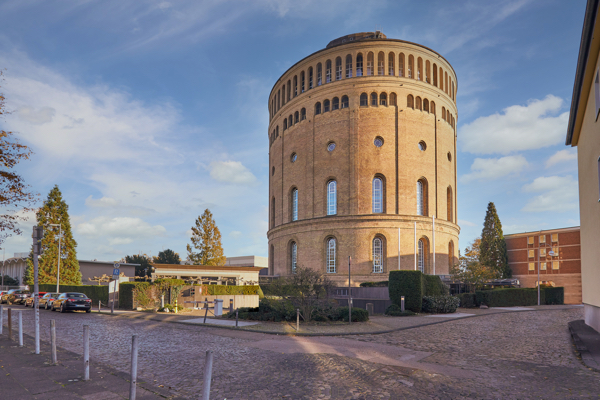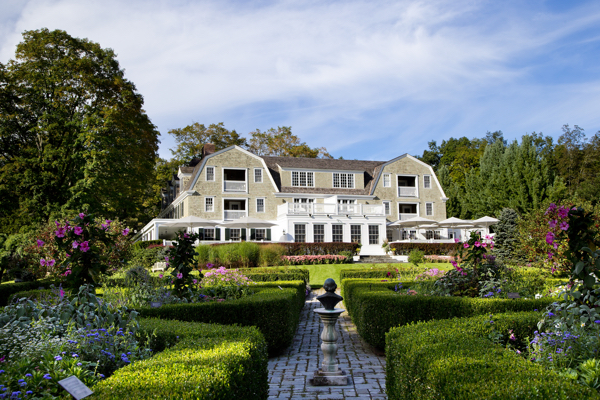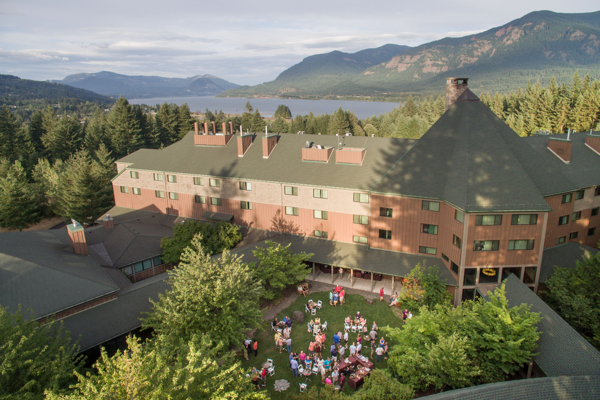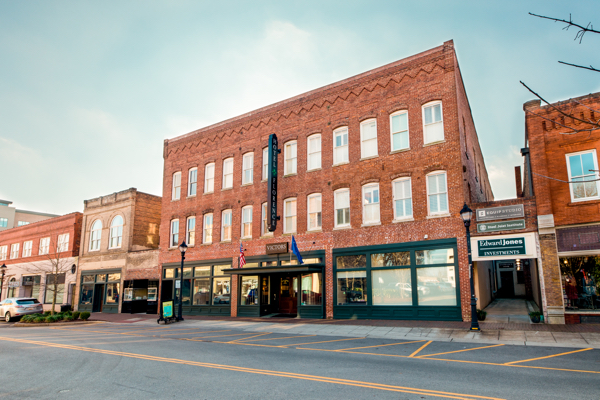Lately, investors and developers that wouldn’t normally give a conversion candidate a second look are finding new appreciation for existing hotels. Chalk this change up to the proliferation of distressed properties and the difficulty forecasting costs and schedules for new construction, thanks to supply chain disruption, labor shortages and the soaring costs of building materials.
Contributed by Megan Rowe
Major brand players have especially capitalized on the appetite for conversions over the last two years. Through the third quarter of 2021, about a third of hotels added to Hilton’s portfolio were conversions. Wyndham Hotels & Resorts saw double the number of U.S. conversions during the third quarter of 2021 compared with two years earlier. In a recent development update, Marriott International reported that 21% of its openings last year—more than 18,000 rooms—were through conversions. Additionally, converted property rooms accounted for 27% of Marriott’s new signings last year. “Conversions are an important driver of rooms growth in any year, but they have been particularly meaningful during more disruptive times,” the company noted.
For investors, developers and owners, the math is compelling. “When you look at the conversion model… you are able to ascertain the cost much easier than you can with new construction,” said Tom Nee, senior vice president, Development, Foundation Brands, with Choice Hotels International, Rockville, Maryland. “It’s a lot easier to find a project that’s open and operating to estimate costs. From the day you invest, you have a revenue stream.”

Looking for upside
Approaches to conversions vary widely, depending on investors’ and operators’ priorities.
New York City-based EOS Investors, for example, blossomed from one hotel in its portfolio, the Hamilton in Washington D.C., to 41 by the end of 2021, mainly by snapping up existing assets, especially independents, mostly in secondary markets along the U.S. east coast. “Where we have continued to be most active are markets with little to no new construction and demand driven primarily by leisure,” said EOS Managing Director Tom Burns, who is banking on leisure guests driving demand for the foreseeable future, especially in well-established destinations.
That doesn’t mean the company isn’t dismissing urban locations in anticipation of a rebound in event and business travel. “We’re active in evaluating major markets… but we’re not seeing a lot of sellers interested in selling,” Burns added.
Mission Hill Hospitality, a Denver-based property company from KSL Capital Partners specializing in select-service and extended-stay, bought 13 hotels in 2021. CEO Greg Kennealey expects 2022 to deals to accelerate, focusing on undercapitalized or under-managed properties that need some TLC or new management. Other prized qualities include location, diverse demand drivers and some competitive advantage—prime spot, newest asset in the market, limitations on new development nearby.
Pebblebrook Hotel Trust, Bethesda, Maryland, values properties with a back story. “We think the opportunity continues to be a major one, because people like things that are unique, different, experiential,” said CEO Jon Bortz. Pebblebrook’s portfolio includes The Liberty in Boston, originally a jail; Hotel Monaco in Washington D.C., built as a post office; and Jekyll Island Club Resort in Georgia, once a private hunting club for wealthy families. Of that last property, Bortz said, “There’s a huge opportunity to reposition it to a 4- to 5-star level, bring it back and amplify the history and uniqueness of it.” He said renewing the resort will likely involve an investment of about US$20 million, or about US$100,000 a key.
Bortz also likes land. “If a property has land, it gives you more opportunities to add amenities,” he reasoned. Skamania Lodge in Columbia River Gorge, Washington, sits on a large parcel once dominated by a golf course. The company downsized and redesigned the golf course and added a zipline course, hiking trail, outdoor pavilion, treehouses and an axe-throwing venue to broaden the appeal of Skamania, which originally was a conference center.
Pitfalls, challenges
The most obvious pitfall for executing on a conversion would be overpaying, Kennealey said. “You can’t fall in love and talk yourself into a property,” he added.
Similarly, a plain vanilla hotel with no factors separating it from the competition, a crowded market or a situation where a competitor can easily renovate and steal share are bad signs. Retaining a competitive advantage from a facilities standpoint “is tricky in select-service and extended-stay because it’s easy to build,” Kennealey added.

In the Middle East and Africa, unlike much of the rest of the world, travel demand and new construction remain robust, said Guy Hutchinson, CEO at Rotana Hotel Management Corp., Abu Dhabi. While conversions are not its main focus, Rotana has seen increased opportunities for projects, especially among independent assets in the 3- to 4-star category.
An important consideration for investors, Hutchinson argued, is what upgrading or joining a brand will cost versus potential returns. Often owners don’t fully grasp the soft costs—signage, training, recruitment—of a change.
A reality check is important for any developer or owner looking to convert a property. “You need to be realistic about the segment that box can fit in,” Choice’s Nee said. Timing and budgeting are also crucial, and Choice provides a detailed plan of any improvements and upgrades required up front, so owners will fully understand the scope. To avoid any glitches in the process, “we strongly suggest, in this day and age of supply chain issues, that they put together a responsibility matrix on the property level,” Nee added.
Bricks and mortar issues often are manageable, Hutchinson said. But overcoming an entrenched culture is often more of a challenge. “Investors convert for a reason, not to post the same results. The biggest mistake is leaving the management in place,” Hutchinson said.
Taking over an independent property, especially a unique asset, requires a different mindset, as well. “You need a team that understands it’s a different kind of business,” Bortz said. “When you don’t have a loyalty program, you have to go get that business yourself. It requires different talent—you need leadership with that background who know how to get the business and amplify that unique story.”
Auberge Resorts CEO Craig Reid estimated the company’s deal flow has tripled over the last four years, thanks to demand for bespoke luxury experiences. Mill Valley, California-based Auberge has partnered with owners who saw great bones in former schools, mansions—even a barn—and down-at-the-heels luxury properties that needed some love. He, like others in the luxury space, values structures with character.
“If you can take over a nice public space that also has a function to it, you immediately have a story to tell. You can start creating a choreography of service around it,” Reid said.
Comfort, safety and a path to carve out guestrooms are obvious requirements. These days, the need for Instagram-friendly spaces has accelerated dramatically, he adds. Auberge prefers hiring residential designers over commercial hotel designers to achieve the right look.

Hilton has benefited from independents’ interest in the safety of a brand umbrella over the last several years. New additions globally to the Doubletree brand, in particular, helped it expand to the 50th country last year. Hilton’s soft brands, such as Curio and Tapestry, have appealed to independent owners eager for distribution and loyalty members’ business, said Gary Steffen, global category head for the company’s full-service brands. While conversions have always been an important element in Hilton’s growth, “we definitely have had a stronger effort for this,” he said.
Owners also need to weigh whether being part of a brand family will pay off. “You have to have the conviction, whether it’s a soft or a hard brand, that the incremental cost is going to have an ROI,” Kennealey noted. “The answer is not always ‘yes.’ Some people think it’s a magic bullet, but it isn’t.”
When adaptive reuse makes sense
While some urban locations are seeing hotel rooms converted to residential or coworking spaces, this strategy can be problematic.
“We thought we would see dramatically more conversions from hotels to other uses over the last 18 months, but what we have found is that with the cost to convert and the time to convert, economically it does not make sense to change the use,” EOS’ Burns said. “We have seen time and time again that owners come to the conclusion that hotels are worth more if they wait for a recovery than if they actively explore another use.”
Nee agreed. He has seen developers turn assets into senior living, assisted living and low-income housing. Between the costs to convert and the difficulty forecasting returns, “we have seen those same developers not go back into that space,” he added.
Florence, South Carolina-based developer and manager Raines has adapted several existing structures, including a steel factory in Asheville, North Carolina, and learned some hard lessons along the way. “There’s a lot of destructive testing—for plumbing systems, for example—and you have to make sure you have a healthy contingency to get those done,” said Raines Managing Partner Grey Raines. During Raines’s first conversion project, more than a decade ago, the contingency fund was exhausted within a month. Tax credits on rehabilitation of historic structures might ease the budget pressure, but the timeline for completing a project is often longer than with a traditional renovation.

It’s crucial, Raines and Reid agree, to bring specialized experts on board. “Some of these characterful buildings have issues, and the important thing is working with people who have worked on buildings like that before,” Reid said.
But, Raines noted, “the adaptive reuse world has a lot of consultants who want to fee you to death. You need to make sure they deliver and be tough on pricing.”
At the end of the day, the outlook for conversion opportunities remains strong.
“I think in 2022 there will be a lot of distressed properties,” said Choice’s Nee. “The opportunity will be investing in distressed hotels and repositioning them to maximize revenues.” He expects new construction projects to ramp up this year as well, especially as supply chain snarls untangle.
For Raines and others, traveler demand is driving interest in conversions. “Anyone looking to go back to 2019—it isn’t going to happen,” he said. “Right now, it’s about buying assets that embrace the new mix of travelers.”
